Results 7,581 to 7,590 of 12094
Thread: Anandtech News
-
11-29-17, 04:21 PM #7581
Anandtech: Samsung’s Reveals Li-Ion Battery with Graphene Balls: Higher Capacity, Fas
Samsung on Tuesday announced that it had developed a way to improve Lithium-Ion batteries with its new material called graphene balls. The company says that batteries featuring the new material charge five times faster than conventional Lithium-ion accumulators and enable a considerably higher volumetric energy density.
The new battery technology developed by Samsung SDI and its partners* uses the so-called graphene balls (a 3D structure synthesized from silicon dioxide, Si02) to cover a cathode and also as an anode material. Graphene balls on the cathode suppress damaging side reactions while also providing efficient conductive pathways. This enables faster charging (as graphene features 140 times faster electron mobility than silicon) and increases the number of cycles a cell can withstand. According to Samsung, a battery cell featuring graphene balls has a 27.6% higher volumetric energy density compared to a similar cell without graphene balls. Furthermore, the cell also retains 78.6% of its capacity after 500 cycles at between 5°C and 60°C.
Samsung articulates that graphene balls could enable batteries with up to 45% higher capacities (than contemporary batteries) that can charge in 12 minutes – or five times faster than today’s batteries, as Samsung puts it. However, what Samsung is not saying when it intends to use the technology for commercial applications. Incorporation of a new protective layer for cathode and switching anode material changes battery production technology, which generally affects costs. Meanwhile, Samsung claims that the graphene ball material is not expensive to produce using its new chemical vapor deposition (CVD) process. To grow graphene around SiO2 nanoparticles with diameters of 20–30 nm, Samsung places them into a furnace and feds methane (CH4) into it at 1000°C.
“Our research enables mass synthesis of multifunctional composite material graphene at an affordable price,” said Dr. Son In-hyuk, who led the project on behalf of SAIT*. “At the same time, we were able to considerably enhance the capabilities of lithium-ion batteries in an environment where the markets for mobile devices and electric vehicles is growing rapidly. Our commitment is to continuously explore and develop secondary battery technology in light of these trends.”
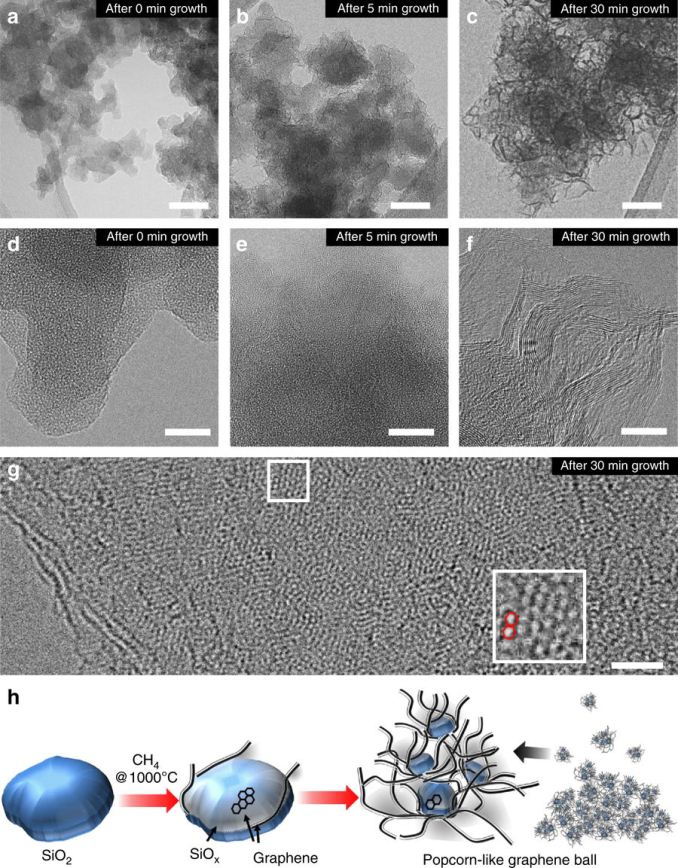
Samsung expects to use its Li-ion batteries featuring graphene balls for electric vehicles and various mobile devices. Since the improved batteries can handle temperatures of around 60°C, they are a good fit for both applications. The most important question is of course when exactly Samsung SDI plans to commercialize them. To that end, it is noteworthy that earlier this year an unnamed executive from Samsung SDI told a newspaper that the company would be able to produce solid-state batteries for smartphones sometimes in 2019.
*The new battery technology was co-developed by Samsung SDI (the company’s battery arm), Samsung Advanced Institute of Technology (SAIT) as well as Seoul National University’s School of Chemical and Biological Engineering.
Buy Samsung Galaxy S8 64 GB (U.S.) Unlocked on Amazon.com
Related Reading:
- Hands On With the Samsung Galaxy Note8: Think Big
- Samsung Galaxy S8 Showdown: Exynos 8895 vs. Snapdragon 835, Performance & Battery Life Tested
- Samsung Announces Notebook 9 Pro 2-in-1, Includes S Pen Stylus
- First Look: Samsung Galaxy S8
Sources: Samsung, Nature
More...
-
11-30-17, 06:10 AM #7582
Anandtech: VR Startup Varjo Announces Shipping of High Resolution Headset Prototype,
Today at Slush 2017, Finnish VR startup Varjo Technologies is announcing that their first formal prototype headset will be shipping within the next month, as well as unveiling their collaboration efforts with a number of new development partners. While we don’t often cover these smaller companies, there are a few notable elements to Varjo’s endeavors. First is the hardware itself: Varjo’s VR headset incorporates two displays where the inner central region has very high resolution and pixel density, surrounded by a coarser lower resolution peripheral region. The second is the niche: Varjo is focusing solely on the professional market.
The headset – and the company itself for that matter – was outed this past June when Varjo exited their startup stealth period, and at that time they gave private demoes to press and analysts with a modified Oculus Rift (CV1). In that configuration, the Oculus display provided the 100 degree FOV peripheral and two OLED microdisplays, courtesy of Sony DSC-RX100M4 compact cameras, provided the in-focus 20 degree region.
Scientifically, what Varjo is adopting is a form of foveated projection – mimicking the human vision’s out-of-focus peripheral and in-focus center. Foveation is widely considered to be one of the critical steps to the next generation of VR headsets, as matching the human eye's own capabilities is, if executed correctly, a more direct means to having high pixel density HMDs without all of the manufacturing challenges of building a continuous high density HMD, and without the massive rendering workload required to fill such an HMD. Various GPU vendors have already been working on foveated rendering, and now with Varjo's prototype we're going to start seeing forms of foveated projection.
For the new "20|20" prototype, when it comes to the high density zone of the HMD, users will be looking at a pair of 3000 ppi displays, each measuring 0.7 inch (diagonal) and offering a 1920 x 1080. Refresh rates are currently at 60Hz, though Varjo noted that 120Hz rates are currently undergoing testing, seeing it as a reachable goal. As for latency, Varjo notes that the displays have microsecond switch times and thus generally have low latency.
The two displays are complemented by an optical combiner and gaze tracker so that the focused regions are in line with a user’s gaze. As a whole, Varjo have taken to calling these technologies a “Bionic Display,” though to be clear the phrase is sometimes used metonymically for the headset itself. While not present on the Oculus based prototype, their headset has external cameras to allow for mixed reality (MR) and augmented reality (AR) functionality via video see-through, as opposed to the optical see-through of HMDs like HoloLens.
Taking a step back, what Varjo is going for is essentially removing the screen-door effect of current VR HMDs via by offering an area of very high pixel density. But the tradeoff with that pixel density is the limited size and FOV of the OLED microdisplays, and thus foveated projection, with Varjo filling in the rest of the FOV with a lower resolution. Executed correctly, this means that the high resolution display is always aligned with the center of the user's FOV – where a user's eyes can actually resolve a high level of detail – while the coarser peripheral vision is exposed to a lower pixel density. As mentioned earlier, in principle this allows for the benefits of high resolution rendering without all of the drawbacks of a full FOV high density display.
However this is not to say that Varjo's approach isn't without its own challenges. Such a solution only works if A) the displays are visually seamless, B) the displays have synchronized high refresh rates, and C) eye-tracking ensures that the focused high density region is always at where a user’s gaze is, all elements that Varjo is aiming for. These become especially important once video see-through based AR/MR is in the picture.
The other side benefit is that using off-the-shelf-ish Sony microdisplays would significantly reduce costs and man-hours, particularly for prototyping as the retrofitted Oculus demonstrates. So in those senses the idea of mimicking human vision is deeply intertwined with the design and engineering choices, marketing appeal of human-eye resolution notwithstanding.
Another thing to note is that the Sony microdisplays are around $850, which by itself is more than many consumer HMDs already on the market. The Varjo headset is intended for the professional market and will be priced that way; Varjo described a typical user as using dual Quadro P6000s, which is not only an immense amount of graphical horsepower but also around $10000 for the graphics cards alone.
In practice, positioning for the professional market requires a lot of collaboration in regards to workstation applications, certification, drivers, and the simple calculus involved in fitting a specialty technology into a workflow. Which is why the second part of today’s announcement mentions a number of development partners; Varjo lists 20th Century Fox, Airbus, Audi, BMW, Technicolor, and Volkswagen as headliners. And on the GPU side, Varjo is involved with AMD and NVIDIA, though no further details were given. But even at a glance there are interesting avenues to pursue, such as LiquidVR on AMD’s side, and Holodeck or VRWorks on NVIDIA’s.
Details in general were limited, but this is to be expected. After all, formal prototypes are just now finding its way into development partners’ hands: the Alpha Prototype headset, shipping with Unreal and Unity plugins, is slated for select partners before 2018, while Beta Prototypes are specified to begin shipping in Q1 2018 to partners involved in design, engineering, simulation, and entertainment. Varjo is still a developing company, and by venture capital standards they certainly are, having received a round of Series A funding just two months ago.
It’s worth noting that Varjo positions itself as a VR hardware and software company, and is now describing their headsets more as a vehicle for Bionic Display. Now that the “20|20” headsets have successfully courted a number of interested companies, Varjo can look more broadly in both productizing a headset and planning an ecosystem that it could be successful in.
Varjo expects to launch its first commercial headsets in 2018.
Source: Varjo
More...
-
11-30-17, 08:48 AM #7583
Anandtech: The Samsung PM981 SSD Review (512GB, 1TB): Next Generation Controller And
The Samsung PM981 is an OEM SSD featuring a newer generation of controller and flash than the current retail 960 EVO, resulting in improved performance and hopefully lower prices. The PM981 will be Samsung's mainstream NVMe drive for OEMs in 2018 and this is a preview of their next retail NVMe SSDs.
More...
-
11-30-17, 08:48 AM #7584
Anandtech: Toshiba Updates XG5 NVMe SSD With Faster And Larger XG5-P
Today Toshiba is announcing a new variant of their XG5 client NVMe SSD for the OEM market. The new XG5-P offers improved performance over the original XG5 and introduces a 2TB capacity option. Both the original XG5 and the new XG5-P are based on Toshiba's 64-layer BiCS3 3D NAND flash memory, their first generation of 3D NAND to see widespread release.
The sequential throughput specifications for the XG5-P show only a slight improvement in write speed and no change in read speed. The original XG5's random access performance specifications aren't listed on the product page, but the XG5-P's random access speeds aren't particularly impressive when compared to what Samsung's NVMe SSDs manage. However, we found the XG5's overall performance to be quite reasonable; Toshiba isn't starting at a disadvantage relative to anyone but Samsung.Toshiba XG5-P Specifications Model XG5-P XG-5 Capacities 1 TB, 2 TB 256 GB, 512 GB, 1 TB Controller Toshiba TC58NCP090GSD NAND Flash 64L 3D TLC Sequential Read (up to) 3000 MB/s Sequential Write (up to) 2200 MB/s 2100 MB/s Random Read 320k IOPS not specified Random Write 265k IOPS not specified TCG Opal Encryption Optional Form Factor single-sided M.2 2280
The most significant performance change Toshiba claims for the XG5-P is to full-range random access, outside the limits of SLC caching. Here Toshiba promises up to a 55% performance improvement for the 1TB XG5-P over the 1TB XG5, which should translate to significantly higher scores on our heavier benchmark tests and better performance on heavier real-world workloads.
Toshiba claims that the performance improvements don't compromise the power efficiency of the XG5, which was already by far the most power efficient NVMe SSD we've tested. Even if this claim doesn't hold up, Toshiba has a bit of room to sacrifice efficiency while still having a great drive for high-end notebooks.
The Toshiba XG5-P will be available in 1TB and 2TB capacities. Self-encrypting drive (SED) versions will be offered.
More...
-
11-30-17, 10:28 AM #7585
Anandtech: Toshiba Unveils 10TB HDDs for Video Surveillance: Support for up to 64 HD
Toshiba has announced its third-generation SV-series hard drives designed for always-on video surveillance applications. The new HDDs can record videos from 64 HD cameras simultaneously, offer up to 10 TB capacity, and offer a considerable increase in the performance-per-dollar metric compared to their direct predecessors due to higher spindle speed and areal density.
The Toshiba MD06ACA-V family of hard drives includes models with 6 TB, 8 TB and 10 TB capacities featuring a 7200 RPM spindle speed, a 256 MB cache buffer, and a SATA 6 Gbps interface. The SV-series HDDs are aimed at various video surveillance applications (SDVR, SNVR, Hybrid SDVR) and therefore support a number of specific enhancements, such as ATA streaming technology and ability to record data from up to 64 HD cameras at once. Surveillance-class HDDs have to quickly wake up from idle and resume work, which these drives support.
Since devices like surveillance digital video recorders and surveillance network video recorders usually contain many hard drives (and to some degree resemble a NAS), Toshiba’s new SV-series HDDs are prepared to work in vibrating multi-drive environments. To a large degree, the new SV-series HDDs from Toshiba rely on the platform originally developed for the enterprise-grade MG06ACA HDDs (which also work in vibrating environments) launched earlier this year. Not all capabilities of the MG06ACA are supported by the MD06ACA-V, but the drives feature top and bottom attached motors, RVFF sensors, second-generation dual-stage actuators, and some other enhancements. Toshiba rates its 3rd generation SV-series HDDs for 180 TB per year and one million hours MTBF, which is considerably below ratings of enterprise hard drives, but is in line with HDDs for surveillance applications from other makers.
When it comes to actual performance, Toshiba’s MD06ACA-V drives resemble their enterprise-grade brethren: a 240-249 MB/s maximum sustained transfer rate, which is natural as the drives use the same PMR platters. Meanwhile, the power consumption of the SV HDDs varies between 7.88 W and 9.48 W, depending on the model, but this is lower compared to the aforementioned enterprise-grade hard drives. It is noteworthy that from the pure performance point of view, the Toshiba’s MD06ACA-V are the fastest HDDs for surveillance applications in the industry. However, since flagship Seagate SkyHawk/SkyHawk AI and WD Purple drives use helium for high-capacity models, their power consumption is tangibly lower when compared to that of Toshiba’s MD06ACA-V.
Since there are a lot of legacy video surveillance systems deployed, and their HDDs are aging, owners may want to upgrade them. Because older systems use outdated software designed for hard drives with 512B sectors, the MD06ACA-V series supports emulation of such sectors and thus the read-modify-write (RMW) operation to align the source write request with the physical sectors on the disk. The SV-series drives do not feature persistent write cache (PWC) with power loss protection (PLP), unlike the more expensive enterprise HDDs.
Samples of Toshiba’s MD06ACA-V hard drives are now available to interested parties. Since the HDDs will be sold primarily to makers of video surveillance systems, Toshiba does not publish any information about pricing of the new drives as it depends on volumes and other factors.Specifications of Toshiba's MD06ACA HDDs AnandTech.com 10 TB 8 TB 6 TB P/N MD06ACA10TV MD06ACA800V MD06ACA600V RPM 7200 RPM Interface SATA 6 Gbps DRAM Cache 256 MB Persistent Write Cache ??? ATA Streaming Supported Read-Modify-Write Supported Sequential Data Transfer Rate (host to/from drive) 249 MB/s 241 MB/s MTBF 1 million Rated Annual Workload 180 TB Acoustics (Seek) 34 dBA Power Consumption Random read/write 9.48 W 8.61 W 7.88 W Idle 7.15 W 6.33 W 5.59 W Warranty 3 Years
Buy Toshiba X300 8 TB on Amazon.com
Related Reading- Seagate Launches SkyHawk AI HDDs for Intelligent NVRs
- Western Digital Expands Purple Lineup with a 10 TB Helium-Filled HDD
- Toshiba Announces 10 TB MG06ACA HDD: Seven Platters, 249 MB/s, NAND Cache
- Toshiba Commercializes SDK’s 9th Gen PMR, Tech Enables 14 TB PMR HDDs in 2018
- Toshiba's 8 TB X300 HDD Now Available: 7200 RPM Drive For Under $260
- Toshiba Launches N300 HDDs for NAS: Up to 8 TB, Up to 240 MB/s
More...
-
11-30-17, 12:54 PM #7586
Anandtech: MediaTek Reveals MT2621 SoC for IoT: Arm v7 MCU, Integrated GPRS/NB-IoT Mo
MediaTek this week announced a new SoC designed for ultra-low-power autonomous IoT applications such as wearables, security sensors, and similar devices. The MT2621 SoC integrates basic computational capabilities, a modem that supports GSM/GPRS and NB-IoT, and a number of input/output interfaces.
The MediaTek MT2621 features an Arm v7 MCU featuring one core running at 260 MHz, 4 MB of embedded Flash, and 160 KB of PSRAM for microcontroller applications that do not require substantial computational resources or memory. To connect to the outside world, the MT2621 integrates a modem DSP, a wideband module (that supports ultra-low/low/mid bands defined by the 3GPP Rel-14), RF capabilities, and even an antenna that can work over existing GSM/GPRS (as well as upcoming NB-IoT networks). The SoC supports dual standby functionality and can work over both networks simultaneously. To connect to local wireless peripherals, the MT2621 can use Bluetooth 4.2. The chip also has an LCM interface to attach LCDs, an interface for a camera, and audio interfaces to connect a speaker and a microphone.
The highly integrated design of the MT2621 allows device manufacturers to reduce the number of additional components to a minimum, which simplifies development cycles and lowers BOM costs. Furthermore, the MCU is being promoted as being power-efficient, which would enable a long battery life, which is crucial for battery-driven applications, including health/fitness trackers, IoT security sensors, smart meters and industrial equipment. Device manufacturers will also have to write their software for the MT2621 that can run a customized MCU-variant of Linux, but naturally not Android or similar operating systems.
MediaTek did not disclose which manufacturing technology it plans to use to produce the MT2621 on, but given rather modest compute capabilities of the chip (as well as target applications), the SoC will likely be made using an inexpensive low-power planar fabrication process. As for the availability timeframe, it depends on the developers of actual hardware. Typically, the development of low-power devices does not take too long, but then it can take months to validate these products and ensure everything works properly. Interested parties will need to contact their local Mediatek representatives for more information.
Related Reading- Samsung Begins Production of Exynos i T200 SoC for Miniature IoT Devices
- MediaTek Unveils Helio P23 & Helio P30 SoCs: Premium Midrange for Q4'17 & Beyond
- MediaTek Announces Helio X30 Availability: 10 CPU Cores On 10nm
- Mediatek Announces the P25: A Faster P20 with Support for Dual Camera
More...
-
11-30-17, 02:21 PM #7587
Anandtech: MSI Infinite X Desktop US Launch: Core i7-8700K, GTX 1070 & More
MSI has started to sell its latest Infinite X desktops in the US. The new systems are based on Intel’s six-core Core i7 (Coffee Lake) processors, as well as custom Intel Z370-powered motherboards that support CPU overclocking. The most advanced configurations of the Infinite X come with Intel’s unlocked Core i7-8700K chips as well as MSI’s GeForce GTX 1080 Ti graphics cards. Also, MSI is set to allow some of its system integrator partners to build custom configurations of the Infinite X to address the needs of their customers.
Read AnandTech's reviews of the Core i7-8700K and the GTX 1080 Ti here!As reported earlier, the MSI Infinite X will be the company’s most powerful desktop computer and an advancement for the whole series in general. The new PCs are not only based on six-core Core i7-8700K CPUs, and therefore offer better multitasking performance than predecessors do, but they support CPU overclocking. The custom Micro-ATX Intel Z370 motherboard that MSI uses for the Infinite X PCs offers a rather general overclocking functionality supported by the company's Command Center software (allows to adjust per-core frequency, increase CPU/DRAM voltages, improve cooling, etc.).
When it comes to cooling overclocked CPUs and GPUs, MSI’s new system is prepared very well. The Infinite X chassis uses a triple-chamber design with separate chambers for the CPU (this one also hosts RAM, SSD, PCH and some other components), the GPU, and the PSU (this one also hosts 2.5”/3.5” storage devices), isolating the hottest components from each other. Secondly, the graphics and the processor chambers are cooled down using MSI’s Silent Storm Cooling 3 Pro coolers that suck cool air from the outside of the case and then exhaust the warmer air in another direction. Thirdly, the CPU itself is cooled down using MSI’s custom Dragon liquid cooling system to ensure stable operation even when overclocked significantly beyond stock frequencies. According to MSI, cooling systems inside the Infinite X produce around 25 dB of noise in idle and less than 36 dB when operating at their full performance.
The custom micro-ATX motherboard has four DDR4 slots supporting up to 64 GB of memory, one PCIe x16 slot for a graphics card (MSI offers GeForce GTX 1070, GTX 1080 and GTX 1080 Ti options) and two M.2 slots for SSDs. As for connectivity, the Infinite X motherboard has a GbE port powered by Intel's I219V controller, Intel’s 1x1 Wireless-AC 3168 802.11ac Wi-Fi + Bluetooth 4.2 module, a 7.1-channel audio sub-system with MSI’s AudioBoost and Nahimic 2+ enhancements, USB Type-A and Type-C ports, DP and HDMI display outputs (in case iGPU is used for some reason) and so on.
It is hard to imagine a 2017 gaming PC without custom RGB lighting and other style enhancements. The Infinite-series desktops feature MSI’s Mystic Light functionality, which offers customizable RGB LED presentations. When buying from MSI’s direct partners, it is possible to choose a classic all black side panel or a transparent side panel.Specifications of MSI Infinite X Desktops for the U.S. Market Infinite X VR8RD-007US Infinite X VR8RF-008US CPU Intel Core i7-8700K
6C/12T
3.7 - 4.7 GHz
12 MB LLC
UHD Graphics 630
95 WPCH Intel Z370 Graphics NVIDIA GeForce GTX 1070 NVIDIA GeForce GTX 1080 Ti Memory 16 GB dual-channel DDR4-2400 Storage SSD 256 GB PCIe NVMe 512GB PCIe NVMe HDD 2 TB HDD with 7200 RPM spindle speed ODD DVD SuperMulti Bays Two M.2 slot for SSDs (PCIe or SATA)
1 × 2.5"
2 × 3.5"Wi-Fi Intel Wireless-AC 3168 802.11ac + BT 4.2 Ethernet 1 × Realtek 8111H Display Outputs MB 1 × HDMI
1 × DisplayPortGPU 2 × HDMI
2 × DisplayPort
1 × DVI-D DL
may vary depending on SKUFront HDMI for VR headsets Audio Front 3.5 mm jacks for headset with microphone Back 5 × 3.5 mm jacks
1 × S/PDIFUSB Front 1 × USB 3.0 Type-A
1 × USB 2.0 Type-A
1 × USB 3.0 Type-CBack 3 × USB 3.0 Type-A
2 × USB 2.0 Type-A
1 × USB 3.0 Type-COther I/O Front - Back 1 × PS/2 combo port Dimensions 210 × 450 × 488 mm | 8.27" × 17.72" × 19.22" Color Black with Customizable RGB LEDs PSU 550 W 80 Plus Bronze Additional Information Link Link
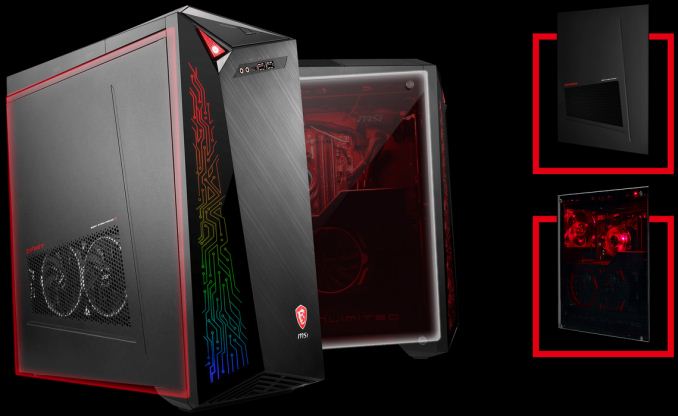
Officially, MSI offers two Infinite X SKUs in the US. The entry-level one is equipped with MSI’s GeForce GTX 1070 graphics card, a 256 GB NVMe SSD, a 2 TB HDD, and starts at $1699.99. The higher-end model comes with MSI’s GeForce GTX 1080 Ti, a 512 GB NVMe SSD, and a 2 TB hard drive. Amazon and Newegg are currently offering versions of the Infinite X with discounts that cost starting from $1,599 or even $1,449 (after a $100 rebate) and feature various configurations.
Buy MSI Infinite X: i7-8700K, GTX 1070, 16GB, 500GB SSD, 2TB HDD on Amazon.com

Related Reading- MSI Infinite X Gaming Desktops to be Released: Up to i7-8700K, GTX 1080 Ti, RGB
- MSI Launches Fanless Cubi 3 SFF PCs with Kaby Lake-U
- MSI Upgrades Its Aegis and Nightblade PCs with Intel’s Kaby Lake CPUs
- MSI Trident 3 Announced: A Core i7 Console
- MSI Cubi 2 Kaby Lake UCFF PC Review
- MSI Releases the 'VR One': A Backpack PC For VR From $1999
- MSI Releases Vortex: A Mac Pro-Like SLI PC for Gamers and VR, from $2199
More...
-
12-01-17, 12:15 AM #7588
Anandtech: HEVC and the Windows 10 Fall Creators Update
The Windows 10 Fall Creators Update (FCU) came with a host of welcome changes. One of the aspects that didn't get much coverage in the tech press was the change in Microsoft's approach to the bundled video decoders. There had been complaints regarding the missing HEVC decoder when the FCU was in the Insider Preview stage. It turned out to be even more puzzling when FCU was released to the stable ring. This has led to plenty of erroneous speculation in the user community. We reached out to Microsoft to clear things up.
The missing HEVC decoder is not a factor for users playing back media through open source applications such as Kodi, MPC-HC, or VLC. However, users of the Movies and TV app built into Windows 10 FCU or software relying on the OS decoders such as Plex will find HEVC videos playing back with a blank screen. While this is a minor inconvenience at best, a more irritating issue is the one for users with systems capable of Netflix 4K playback. Instead of 4K, FCU restricts them to 1080p streams at 5.8 Mbps (as those are encoded in AVC).
We initially believed patent licensing to be the issue. While the exact royalty terms for the HEVC playback capability in Windows 10 remain a closely guarded secret, MultiCoreWare's Tom Vaughan believes that the licensing for systems with a hardware decoder available is handled by the device OEM. However, the onus shifts to Microsoft for a pure software decoder bundled with the OS.
On reaching out to Microsoft, a spokesperson gave us the following quote: “With the Fall Creators Update, we changed our approach to media codecs to enable us to get more codecs to consumers faster and give device makers more flexibility via a new approach called Codec Packs. The HEVC hardware codec has been converted to a Codec Pack and will be soon available to all devices running the FCU.”
We then explicitly asked them if the decision to go the codec pack route was dictated by patent royalty issues. The exact quote we received was: “Customers who upgrade to the FCU on compatible hardware will get HEVC. For new devices that do not include HEVC, it will be available soon through the Microsoft Store. It may take a day or two after the upgrade to FCU for the codec to get installed.”
Based on these comments, we believe that there are no changes to the user in terms of the cost of the Windows 10 HEVC decoder (particularly given the automatic rollout indicated by the Microsoft spokesperson). We do note that Microsoft refused to comment on the royalty issue outright, but, almost all modern systems come with a hardware decoder and the Windows 10 HEVC codec is going to remain free for those systems.
Users who do not want to wait for the update to rollout into their system can install the HEVC Video Extension app from the Microsoft store.
After upgrading to the FCU on our ASRock Beebox-S 7200U sample, we found that the Netflix 4K capability went missing (see earlier screenshot). However, after installing the HEVC Video Extension, we were able to stream the 4K versions of various titles.
Note that any Win 10 FCU system with a hardware HEVC decoder is affected by this issue. This includes systems making use of a NVIDIA GPU for Netflix 4K capabilities also.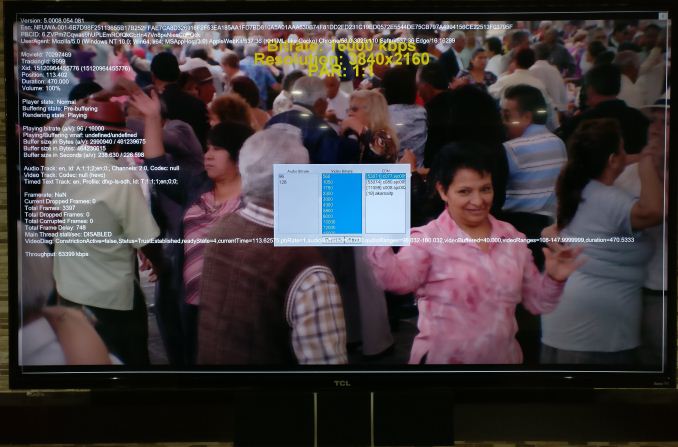 Netflix 4K Stream (2160p / 16 Mbps) on the ASRock Beebox-S 7200U with the Windows 10 FCU and HEVC Video Extension App Installed
Netflix 4K Stream (2160p / 16 Mbps) on the ASRock Beebox-S 7200U with the Windows 10 FCU and HEVC Video Extension App Installed
The change in approach slightly changes Microsoft's current tightly coupled approach to video decoders. As new video codecs like AV1 become stable and mainstream, the new architecture allows Microsoft to bring it to their customers in a quick and efficient manner.
More...
-
12-01-17, 07:26 AM #7589
Anandtech: The $80 Power Supply for Almost Everyone: The Corsair TX550M 80Plus Gold P
Today we are having a look at the Corsair TX550M, a product designed to compete in the mainstream market by combining good overall performance, high quality, and reasonable cost. It comes with an 80Plus Gold efficiency certification and with a power output perfect for the vast majority of single GPU gaming systems. We are having a closer look at its quality and overall performance in this review.
More...
-
12-01-17, 09:34 AM #7590
Anandtech: Cryptomining Demand Wanes as Q3 2017 Discrete Graphics Cards Shipments Hit
This week, Jon Peddie Research (JPR) released their quarterly discrete video card sales report for Q3 2017. According to JPR's figures, the quarter was a strong one for discrete desktop GPU shipments, with vendors shipping upwards of 15 million units, reaching volumes not seen in four or five years. This high point in card shipments was fueled by positive seasonality, desktop PC gaming, and the tail end of cryptocurrency mining demand, leading to add-in board (AIB) shipments increasing 29.1% over last quarter, more than double the 14% ten-year Q2-to-Q3 average increase. In terms of discrete desktop graphics market share, NVIDIA gained around 3% compared to JPR’s revised Q2 figures, putting the balance at 27.2% for AMD and 72.8% for NVIDIA.
In context, the GPU and PC markets fluctuate in a relatively consistent seasonal pattern: shipments trend flat to down in Q1, notably down in Q2, notably up in Q3, and up to flat in Q4. Also in context, of course, is the effect of cryptomining mining demand on last quarter’s shipments, resulting in an unseasonal increase from Q1 2017. JPR notes the waning demand of Ethereum-driven cryptomining, but concedes that it continues to have an impact that is “still just as impossible to accurately measure.”
These reports of both strong seasonality and weakening cryptomining are corroborated by AMD and NVIDIA’s latest quarterly fiscal results, the former bringing AMD back in the GAAP earnings black and the latter posting yet another record quarter. AMD attributed the 74% year-over-year revenue growth in their Computing and Graphics segment to strong Radeon and desktop Ryzen sales, observing a strong increase in GPU average selling price (ASP). And while on the subject, higher ASPs are certainly not news to many consumers in the market for a mid-range graphics card, with little reprieve as the holiday season approaches.
As for NVIDIA, they attributed continued sales of Pascal based gaming GPUs in growing their quarterly Gaming segment revenue to $1.561 billion. By nature of miners buying GeForce cards, that number includes some amount of cryptomining demand. But in looking at cryptomining specifically, NVIDIA does record crypto-specific boards separately as part of their OEM & IP segment, and they saw sales of those crypto board drop to $70 million from the previous quarter’s $150 million.
So for explaining Q3’s strong AIB shipments beyond Ethereum, JPR unsurprisingly points to gaming PCs, highlighting AMD’s Ryzen Threadripper CPU launch and Intel’s response. Which in this case would entail engaging AMD in core wars with Skylake-X and later two-upping their 16 cores with 18 under a new ‘i9’ branding. Among the report’s other considerations are the continuing popularization of eSports and desktop gaming PCs over mainstream general purpose PCs. The end result is Q3 2017 AIB shipments edging over 15 million units, a figure closer to quarterly volume in 2013 and a 5-year-high since the roughly 17.5 million units shipped in Q3 2012. But JPR also sees the high water mark of Q3 2017 as evidence for the return of traditional seasonality, in the sense that it suggests Q4 2017 shipments will be flat to down. From the standpoint of noticeably waning cryptomining demand and probable lack of major GPU launches, this is arguably more likely than not.
Such atypically high volume always has the potential to affect market share, and for Q3 2017 NVIDIA had the upper hand with their discrete desktop GPU shipments up 34.7% from last quarter, compared to AMD’s 16.1% increase. In terms of market share, this resulted in NVIDIA picking up 3.1%, slowly widening what has been a roughly 70-30 split of the past year with AMD. While the major launch of Q3 2017 was the Radeon RX Vega cards in August, the mid-quarter timing should be noted, as well as the limited post-launch availability that afflicts high-end card launches in general.
Keeping to JPR’s numbers for comparison purposes, the market share impact of RX Vega is likely to be smaller than previous launches as only the high-end and lower-volume RX Vega 56 and 64 have been released, as opposed to if a fuller stack with Vega 11 were trickling out. But given the turbulence of cryptomining, it seems more likely that the broader impact (or non-impact) of RX Vega and even RX 500 cards will not be clearly visible for another quarter or so.
Wrapping things up, the total graphics share, which encompasses discrete and integrated GPUs for desktop and mobile, saw NVIDIA gain more ground mostly at the expense of Intel. Beyond discrete desktop GPU shipments, NVIDIA saw a notable 22.4% increase in discrete notebook GPU shipments. In the aggregate, JPR reports that AMD’s overall unit shipments increased 7.6% quarter-to-quarter, Intel’s shipments increased 5%, and NVIDIA’s shipments increased by a much higher 29.5%. In the next couple years, we may start to see some interesting shifts with AMD’s Zen-based APUs and Intel’s revived determination to develop discrete high-end GPUs. The union that is Intel’s processor with AMD Radeon graphics is unlikely to be high-volume but will be intriguing nonetheless. And as for NVIDIA, their numbers continue to speak for themselves.
More...
Thread Information
Users Browsing this Thread
There are currently 22 users browsing this thread. (0 members and 22 guests)






 Quote
Quote
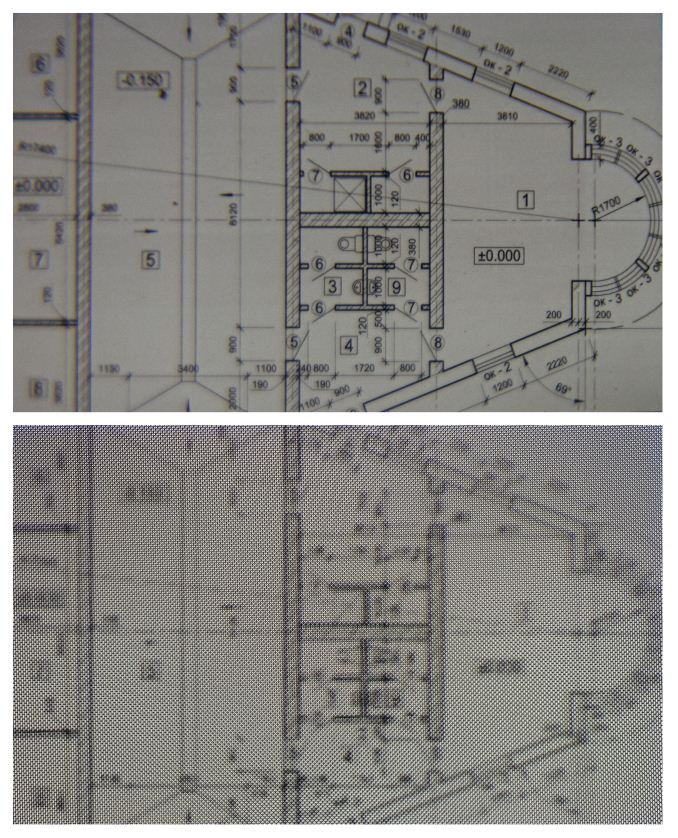
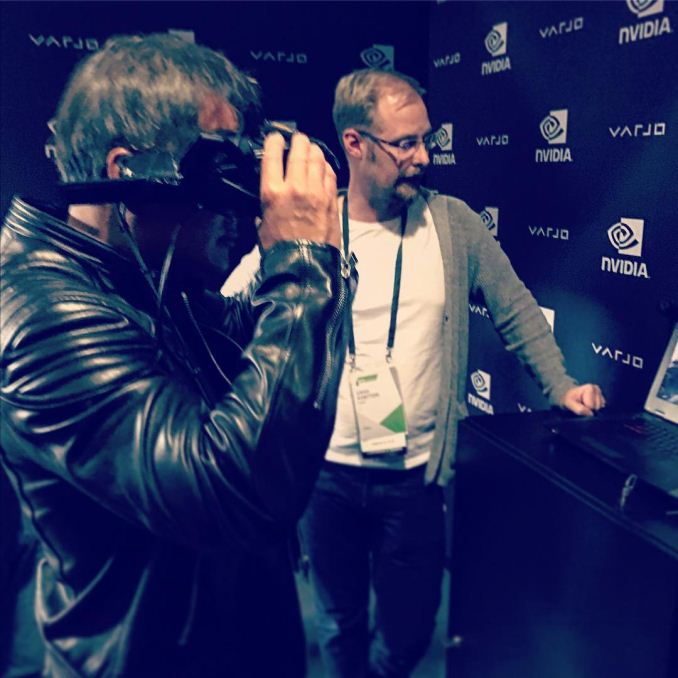
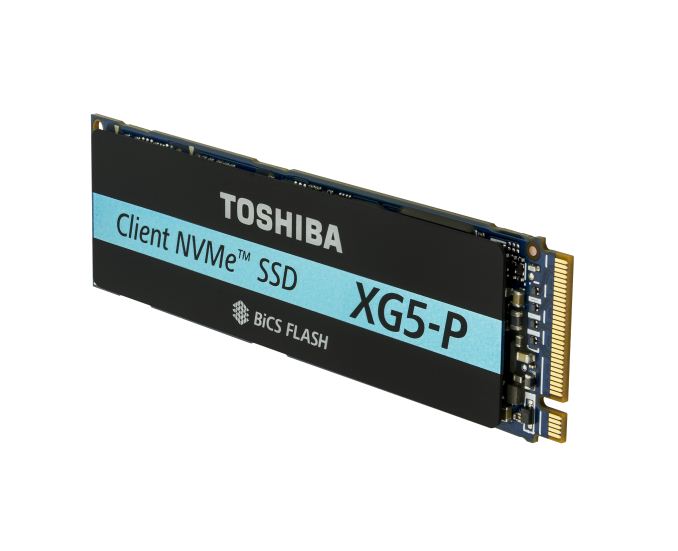

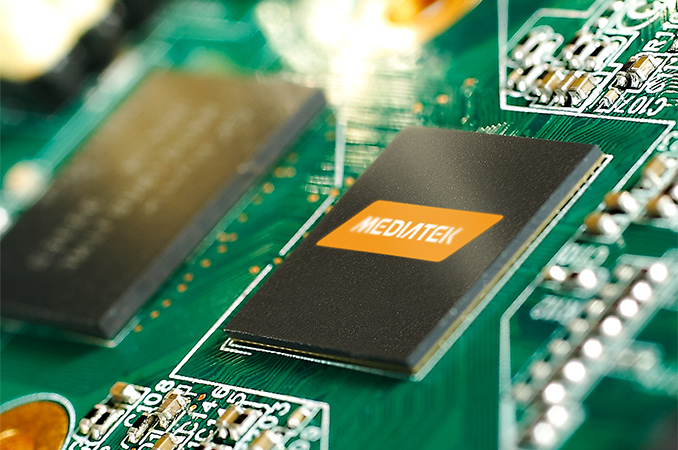

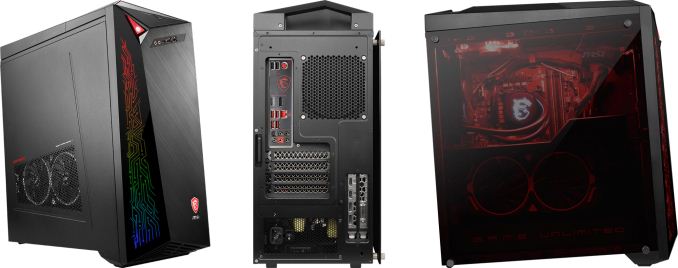
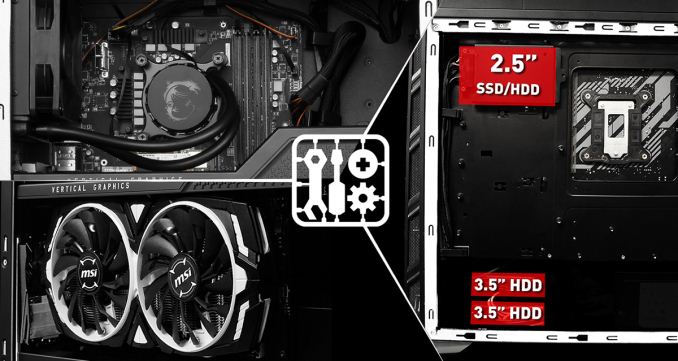

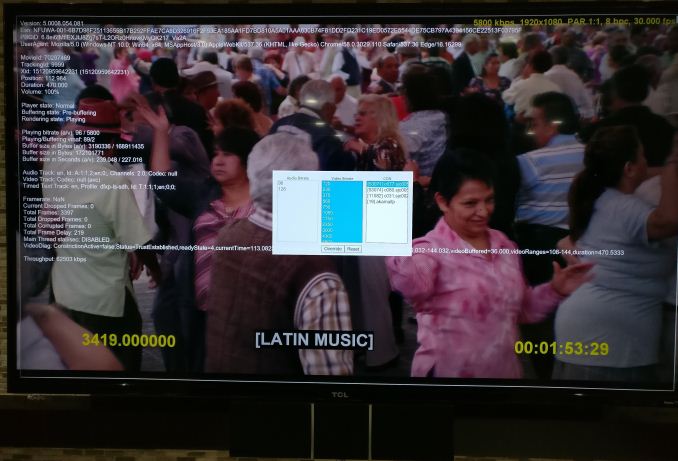


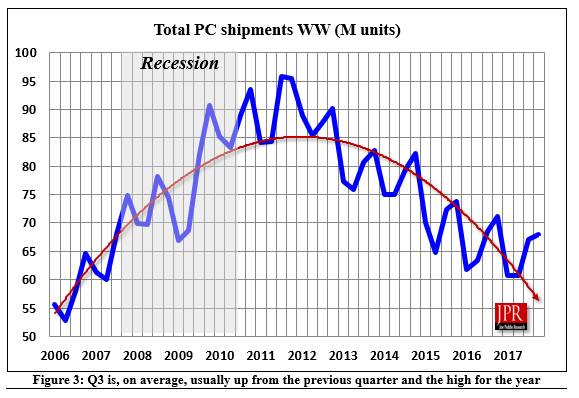
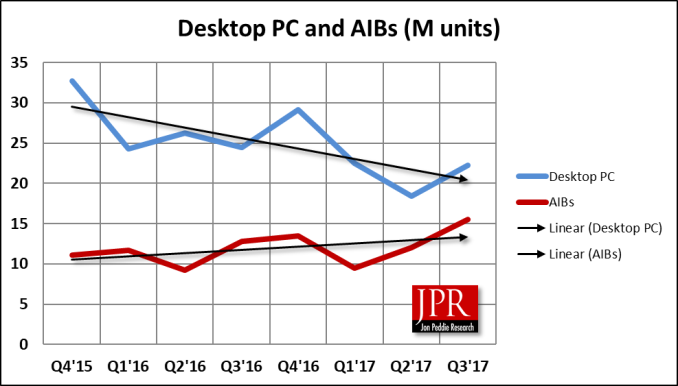

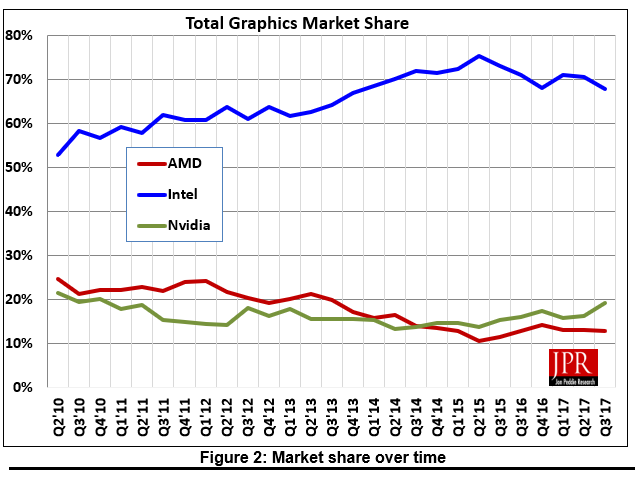

















Bookmarks